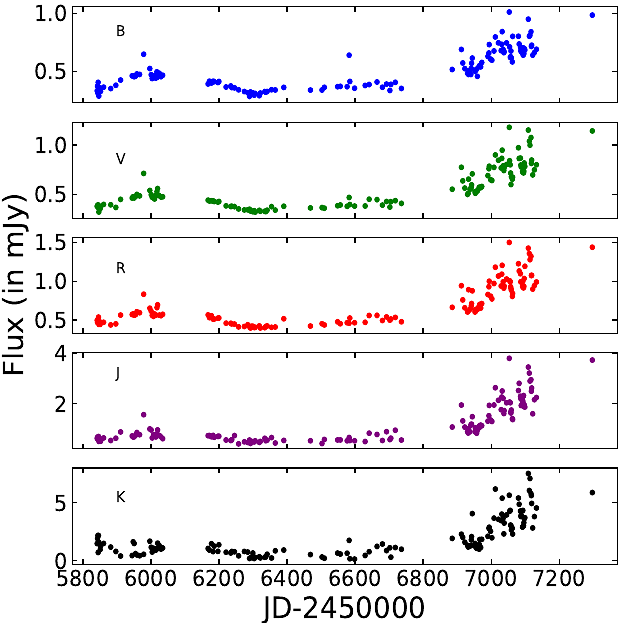Accretion Disc-Jet Decomposition from the Optical-Near Infrared Monitoring of Fermi Blazars

Accretion Disc-Jet Decomposition from the Optical-Near Infrared Monitoring of Fermi Blazars
Garima Rajguru Clemson U., Presidency U. Kolkata, Ritaban Chatterjee Presidency U. Kolkata
AbstractWe study the variability of the thermal (accretion disc) and non-thermal (jet) emission of thirteen flat spectrum radio quasars in the optical and near infrared (OIR) regime using light curves spanning years with an average sampling of three observations per week. We fit a combination of a blackbody and a power-law function to the OIR data, in the blazar rest frame, to extract the corresponding thermal (disc) and non-thermal (jet) components from the total flux. We carry out this analysis for the entire duration of the light curves to obtain the variation of the disc and jet components over years. Reliability of our fits have been affirmed by successfully retrieving accurate parameters by employing our method to simulated data and by comparing our results with published disc luminosity obtained by other methods for a few well-observed blazars. In blazars, the thermal (disc) emission is difficult to extract because the relativistically beamed radiation of the jet dominates at all wavelengths. By employing this method, the disc emission in blazars may be estimated directly from photometric data at OIR bands instead of indirect methods, such as, inferring it from the emission line luminosities. We find that the variability of the disc and jet emission obtained by the above method are strongly correlated in most cases.